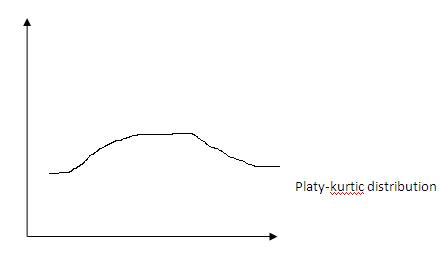- Business Concepts ›
- Statistics ›
- Platykurtic
Platykurtic
Definition & Meaning
This article covers meaning & overview of Platykurtic from statistical perspective.
What is meant by Platykurtic?
Kurtosis refers to measure of the shape, more specifically the ‘peak’ or ‘curve’ of any probability distribution of a real time random variable. A Higher kurtosis generally the distribution will have a sharper peak, and longer, fatter tails. Conversely, a lower kurtosis will have a relatively flatter peak, and shorter, thinner tails.
A distribution having a negative excess kurtosis is termed as platy-kurtic (Platy = broad). The shape of such a distribution is wider, flatter peak, and thin tails, since kurtosis is low. The flatness is caused due to data being less concentrated around the mean, due to larger variations in the data set. Hence, kurtosis is also a measure of the level of fluctuation of the data within a particular data set.
Platy-kurtic or lower kurtosis indicates higher variance in the data set, whereas leptokurtic and meso kurtic are lower in terms of variance in data.
Examples:
- Burnoulli distribution
- Uniform distribution
- Raised cosine distribution

This article has been researched & authored by the Business Concepts Team which comprises of MBA students, management professionals, and industry experts. It has been reviewed & published by the MBA Skool Team. The content on MBA Skool has been created for educational & academic purpose only.
Browse the definition and meaning of more similar terms. The Management Dictionary covers over 1800 business concepts from 5 categories.
Continue Reading:
What is MBA Skool?About Us
MBA Skool is a Knowledge Resource for Management Students, Aspirants & Professionals.
Business Courses
Quizzes & Skills
Quizzes test your expertise in business and Skill tests evaluate your management traits
Related Content
All Business Sections
Write for Us